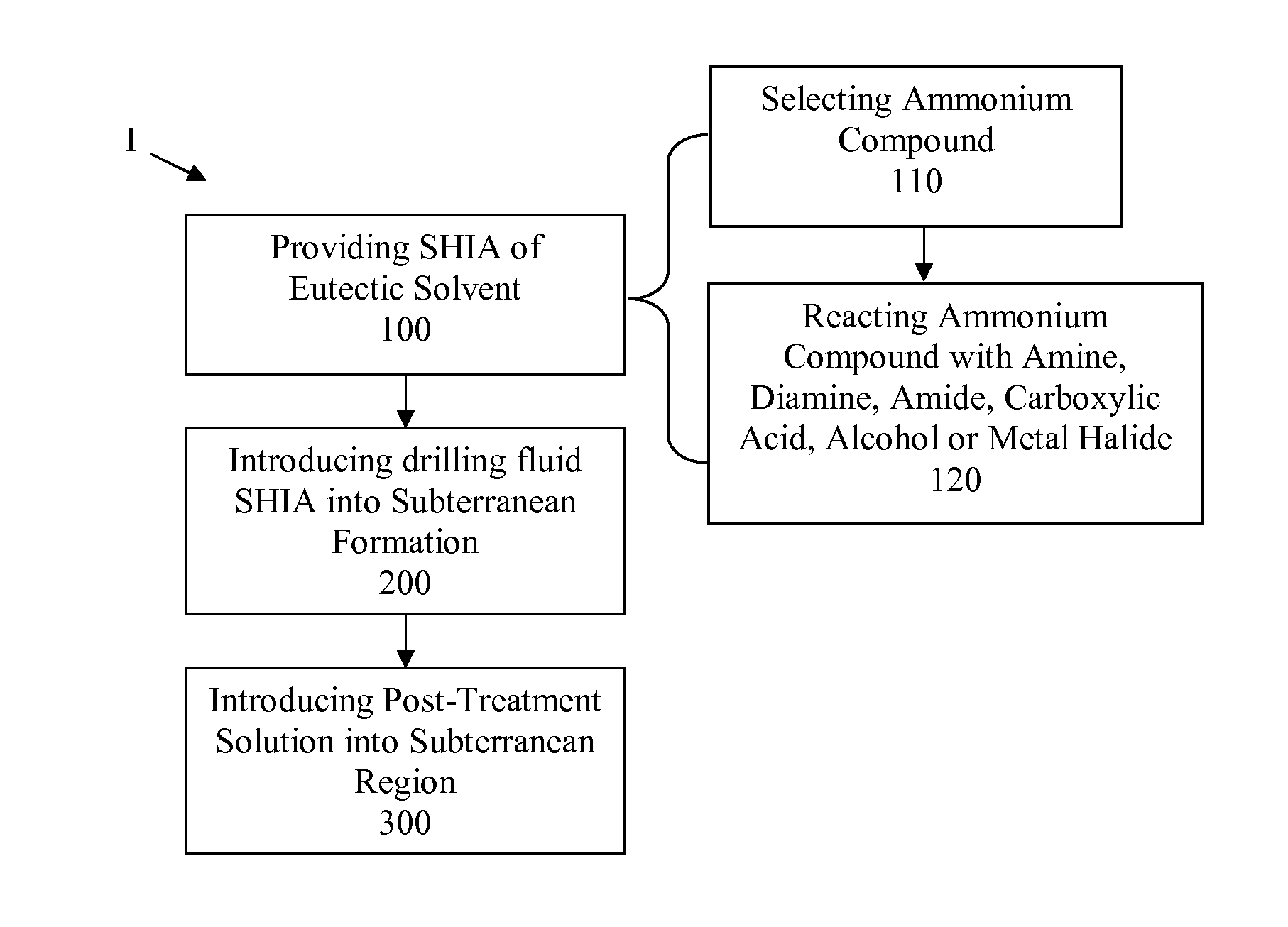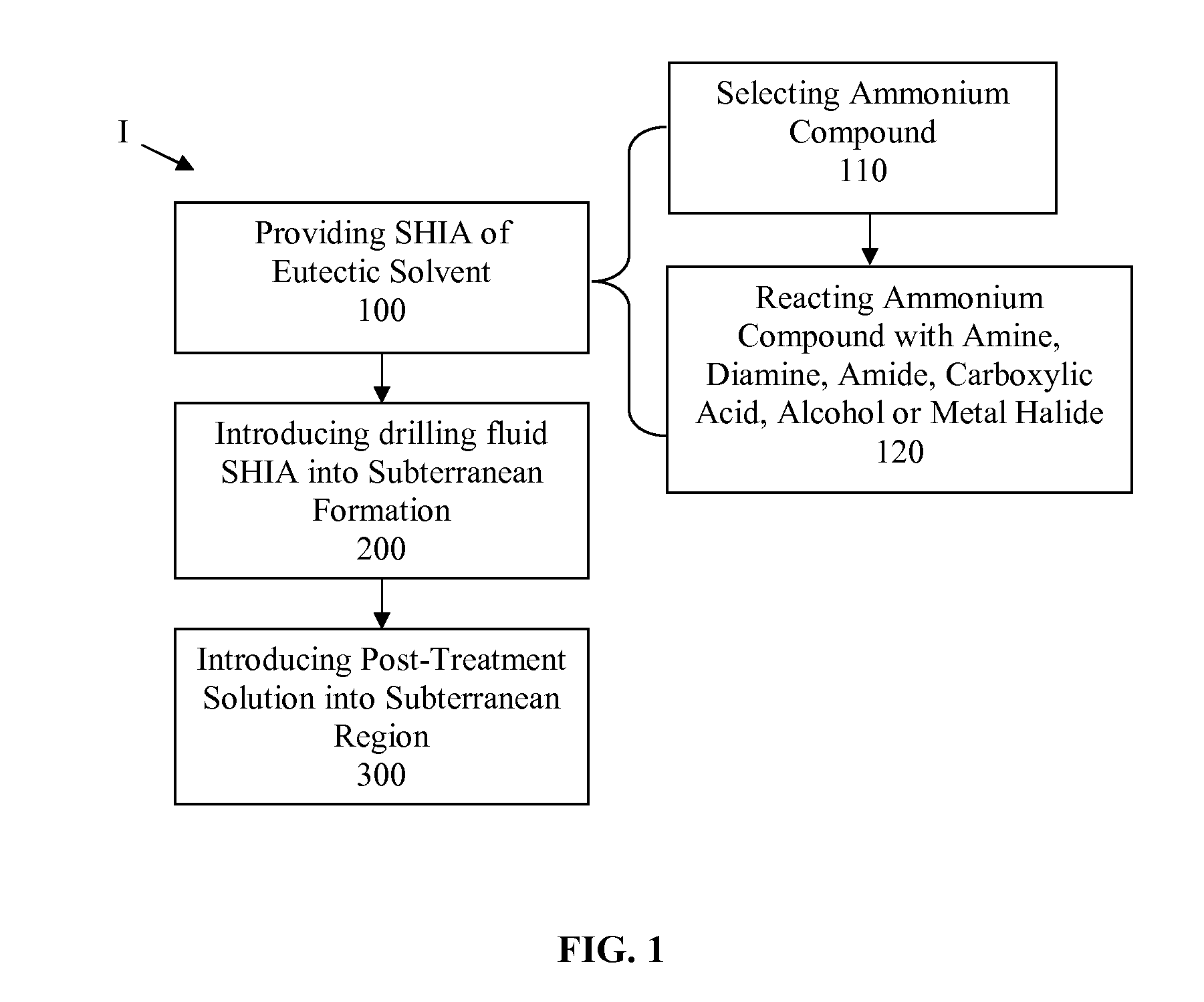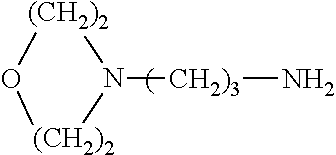Shale hydration inhibition agent(s) and method of use
a technology of gumbo shale and inhibition agent, which is applied in the direction of drilling composition, chemical apparatus and processes, etc., can solve the problems of increasing drilling time and cost, increasing overall volume, and gumbo shale is notorious for swelling, so as to reduce shale swelling and reduce shale swelling
- Summary
- Abstract
- Description
- Claims
- Application Information
AI Technical Summary
Benefits of technology
Problems solved by technology
Method used
Image
Examples
example 1
[0124]Typical results are as follows: a polyetheramine available from Huntsman Corporation as D-230 and investigated in Patel et al., U.S. Pat. No. 6,857,485 gave the following rheological results after being tested as described above wherein the clay content of the lab fluid represented 160 ppb. At 170 ppb the fluid became too thick to obtain readings on.
Plastic Viscosity (cps)50Yield Point (lbs / 100 ft2)80Gel Strength (lbs / 100 ft2)65 / 80
example 2
[0125]Submitting 3-methoxypropylamine (MOPA) to the same test procedure, at the same treatment concentrations gave the following results. The clay content of the sample was 160 ppb.
Plastic Viscosity (cps)11Yield Point (lbs / 100 ft2)6Gel Strength (lbs / 100 ft2)3 / 12
[0126]As can be seen, utilizing 3-methoxypropylamine (MOPA) is superior to the use of polyetheramine that is currently practiced because the methyl group attached to the 0 is an electron donor which increases the amine's pKa to 10.11. This is an unusual response. The propyl group has enough flexibility to allow the transfer of electrons with efficiency.
example 3
[0127]To insure that a propyl group separating two atoms each having an unshared pair of electrons (N, O, S), exhibited the best response, 2-methoxyethylamine purchased from Sigma Aldrich Chemical Company (MOEA, CH3—O—CH2—CH2—NH2) was tested employing the method cited above and the results obtained were compared to 3-methoxypropylamine (MOPA). At 160 ppb, the following results were obtained. It should be noted that the pKa for MOEA is 9.2 which supports the flexibility and electron transfer theory attached to the propylamine theory.
Plastic Viscosity (cps)TTTMYield Point (lbs / 100 ft2)—Gel Strength (lbs / 100 ft2)—TTTM = Too Thick To Measure
PUM
| Property | Measurement | Unit |
|---|---|---|
| temperature | aaaaa | aaaaa |
| temperature | aaaaa | aaaaa |
| weight percent | aaaaa | aaaaa |
Abstract
Description
Claims
Application Information
 Login to View More
Login to View More - R&D
- Intellectual Property
- Life Sciences
- Materials
- Tech Scout
- Unparalleled Data Quality
- Higher Quality Content
- 60% Fewer Hallucinations
Browse by: Latest US Patents, China's latest patents, Technical Efficacy Thesaurus, Application Domain, Technology Topic, Popular Technical Reports.
© 2025 PatSnap. All rights reserved.Legal|Privacy policy|Modern Slavery Act Transparency Statement|Sitemap|About US| Contact US: help@patsnap.com



